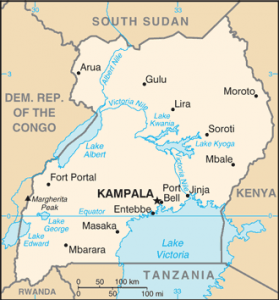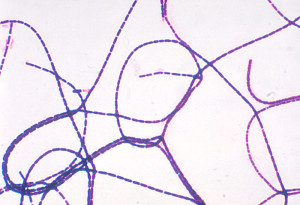Three deaths linked to gastrointestinal anthrax reported just over the border of South Sudan and northwestern Uganda was recently reported by the Xinhua News service. The three South Sudan nationals died at two different hospitals in Uganda territory.

Ugandan state media say the patients contracted the disease from South Sudan but crossed into Uganda in search of better health services. It is suspected that patients with gastrointestinal anthrax get it from contaminated milk or meat.
“An outbreak in South Sudan definitely puts our animal population at risk due to epidemiological location,” said Willy Nguma, the Arua district veterinary officer. “There should be strict quarantine on animals moving from South Sudan to Uganda, and people should be on the lookout. Don’t eat meat of animals that die of anthrax and report cases promptly,” he said.
Anthrax is a pathogen in livestock and wild animals. Some of the more common herbivores are cattle, sheep, goats, horses, camels and deer. Anthrax is a very serious disease of livestock because it can potentially cause the rapid loss of a large numberof animals in a very short time. Affected animals are often found dead with no illness detected.
It infects humans primarily through occupational or incidental exposure with infected animals of their skins.
Anthrax is caused by the bacterium, Bacillus anthracis. This spore forming bacteria can survive in the environment for years because of its ability to resist heat, cold, drying, etc. This is usually the infectious stage of anthrax.
When conditions become favorable, the spores germinate into colonies of bacteria. An example would be a grazing cow ingests spores that in the cow, germinate, grow spread and eventually kill the animal.
LISTEN: Anthrax in animals: An interview with Dr. Buddy Faries

The bacteria will form spores in the carcass and then return to the soil to infect other animals. The vegetative form is rarely implicated in transmission.
There are no reports of person-to-person transmission of anthrax. People get anthrax by handling contaminated animal or animal products, consuming undercooked meat of infected animals and more recently, intentional release of spores.
There are three types of human anthrax with differing degrees of seriousness: cutaneous, gastrointestinal and inhalation. For more infectious disease news and information, visit and “like” the Infectious Disease News Facebook page
Gastrointestinal anthrax follows the ingestion of contaminated meats. It is characterized by stomach pain, severe bloody diarrhea, bloody vomit and an inflammation of the intestinal tract. Up to half of those infected will perish from this form of disease. This is a very rare type of anthrax.
What is anthrax?


5 thoughts on “Uganda reports 3 imported anthrax deaths in South Sudan nationals”